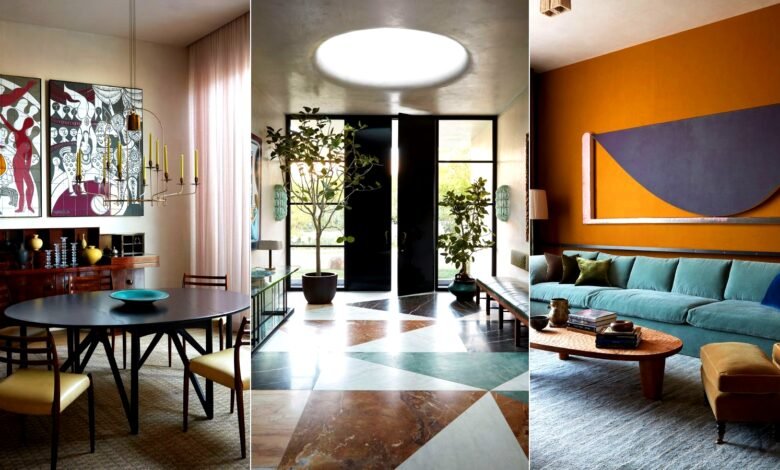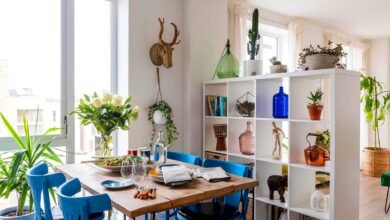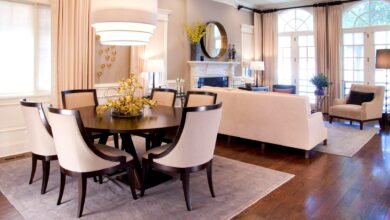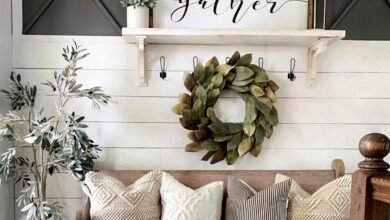The Art of Mixing Modern and Vintage Décor Styles
In this comprehensive guide, we'll explore the art of mixing modern and vintage, tips, and principles that will help you master this design.

Creating a beautiful, functional, and unique home is a balancing act that requires careful thought and creativity. One of the most compelling interior design trends today is mixing modern and vintage décor styles. This dynamic combination allows homeowners to craft personalized, aesthetically pleasing environments that tell a story. When executed well, this style melds the sleek minimalism of contemporary design with the rich textures and character of vintage pieces. In this comprehensive guide, we’ll explore the art of mixing modern and vintage, breaking down techniques, tips, and principles that will help you master this eclectic design style.
Why Combine Modern and Vintage Styles?
Combining modern and vintage elements creates a layered and timeless look. Modern design, characterized by clean lines, simplicity, and functionality, offers a perfect canvas for vintage pieces, which add warmth, history, and depth. This synergy brings out the best in both styles.
Benefits include:
- Character and personality: Vintage pieces bring a sense of history and uniqueness.
- Visual interest: Mixing textures, materials, and eras avoids monotony.
- Sustainability: Reusing vintage furniture is eco-friendly.
- Flexibility: You can easily update your space without a complete overhaul.
Incorporating these benefits can create a home that feels both fresh and grounded.
Understanding the Basics of Modern and Vintage Design
To successfully merge these styles, you need a solid understanding of their defining characteristics.
Modern design typically features:
- Neutral color palettes
- Minimalism
- Clean lines
- Open spaces
- Use of metal, glass, and natural wood
Vintage design embraces:
- Ornate details
- Rich color schemes
- Antique or retro furniture
- Decorative accessories
- Nostalgic themes and motifs
Mixing modern and vintage requires a thoughtful approach to avoid a chaotic or mismatched appearance.
Start with a Neutral Modern Base
Begin with a modern foundation to ensure balance and avoid overwhelming the space. Neutral tones like white, gray, and beige provide a calming backdrop that allows vintage items to shine.
Tips:
- Use modern furniture as your anchor pieces (e.g., sofa, dining table).
- Keep the walls simple and unadorned initially.
- Opt for modern lighting fixtures to establish a clean look.
This approach offers a blank canvas where vintage accessories and furnishings can act as accents or focal points.
Select Vintage Pieces with Purpose
Not every old item qualifies as vintage, and not every vintage piece will suit your space. Choose items that have craftsmanship, aesthetic value, or sentimental meaning.
Ideas for vintage integration:
- A mid-century modern armchair in a minimalist living room
- Antique mirrors in a sleek bathroom
- A rustic farmhouse table paired with contemporary chairs
- Vintage artwork framed in modern styles
The goal is to create contrast and complementarity. Mixing modern and vintage should feel intentional, not accidental.
Balance is Key: Mix, Don’t Match
Design harmony stems from balance, not uniformity. Strive for an even distribution of both modern and vintage elements.
Balancing techniques:
- If your room has modern furniture, introduce vintage textiles or lighting.
- Match the scale and proportion of pieces even if styles differ.
- Blend color palettes so pieces from different eras don’t clash.
Mixing modern and vintage is a creative act—use it to build a dialogue between past and present.
Textures and Materials: A Sensory Experience
One of the most exciting aspects of mixing modern and vintage is playing with textures and materials. Modern interiors often lean towards smooth, polished surfaces, while vintage items add tactile richness.
Examples:
- Combine a sleek metal lamp with a distressed leather chair
- Layer a Persian rug over a minimalist concrete floor
- Add linen or velvet cushions to a modern sectional
These juxtapositions create a multisensory experience that makes your space feel lived-in and dynamic.
Create Focal Points with Statement Pieces
Anchor your design around a few standout vintage pieces. These can serve as conversation starters and focal points within a modern setting.
Ideas for statement vintage pieces:
- A Victorian-era wardrobe in a contemporary bedroom
- A retro bar cart in a modern kitchen
- An antique chandelier in a minimalist entryway
These pieces ground your decor and illustrate the art of mixing modern and vintage in a bold, confident manner.
Reupholster and Repurpose: Blend Old and New
Sometimes, the best way to integrate vintage pieces is to give them a modern twist. Reupholstering or repurposing can make them fit more seamlessly into your modern environment.
Examples:
- Cover a vintage chair with modern fabric
- Convert an old trunk into a coffee table
- Refinish an antique dresser with contemporary hardware
This strategy preserves the soul of vintage items while making them functional and relevant today.
Be Strategic with Accessories
Accessories are where you can most freely experiment with mixing modern and vintage. They allow for low-commitment experimentation and frequent updates.
Try combining:
- Vintage clocks or radios with modern bookshelves
- Retro vases on contemporary side tables
- Modern artwork alongside antique picture frames
Mixing accessories across styles adds layers of meaning and visual texture.
Use Color to Unify the Design
Color can be the glue that holds your eclectic mix together. Use a consistent palette to tie modern and vintage elements into a coherent whole.
Color coordination tips:
- Use accent colors sparingly to avoid visual clutter
- Incorporate vintage textiles that echo modern color schemes
- Use matching tones for frames, trims, or decorative elements
Color unification is key when mixing modern and vintage without making the space feel disjointed.
Keep Functionality in Mind
While aesthetics are crucial, don’t sacrifice function. Your home should not only look good but also serve your daily needs.
Functional integration tips:
- Combine a vintage desk with a modern ergonomic chair
- Use antique trunks for stylish storage
- Ensure lighting is adequate even if fixtures are vintage
Design works best when form follows function—even when mixing modern and vintage.
Highlight Architectural Features
Older homes often come with architectural details that lend themselves naturally to vintage styles, while newer homes benefit from clean lines and open layouts.
Tips to highlight features:
- Emphasize crown molding or ceiling medallions with modern lighting
- Pair modern art with original brick walls or fireplaces
- Use vintage door handles or switch plates as subtle nods to the past
Play up what your space naturally offers to enhance the design narrative.
Common Mistakes to Avoid
Avoid these pitfalls to master mixing modern and vintage decor:
- Overcrowding: Too many items from different eras can overwhelm.
- Lack of cohesion: Random mixing without a unifying theme looks chaotic.
- Ignoring scale: Oversized vintage furniture can dwarf modern pieces.
- Clashing styles: Industrial vintage doesn’t always pair well with mid-century modern.
Being intentional prevents your space from looking like a thrift store explosion.
Inspirational Room-by-Room Examples
Living Room:
- Modern sectional with a vintage coffee table and antique floor lamp
- Sleek walls with a gallery of retro art and vintage photo frames
Kitchen:
- Stainless steel appliances paired with a reclaimed wood island
- Open shelving with both modern glassware and old enamel pots
Bedroom:
- Modern bed with an antique chest at the foot
- Mid-century nightstands with contemporary lighting
Bathroom:
- Clean modern tiles with a vintage clawfoot tub
- Modern mirror above a retro vanity cabinet
Each room is a canvas for mixing modern and vintage in functional and stylish ways.
Shopping Tips for Curating Your Collection
Where to find vintage pieces:
- Estate sales
- Antique stores
- Online marketplaces (Etsy, eBay)
- Thrift stores and flea markets
For modern items:
- Scandinavian furniture brands
- Contemporary design boutiques
- Major retailers like West Elm or CB2
Mixing sources ensures a unique, non-cookie-cutter look.
Conclusion: Embrace the Storytelling Power of Design
Mixing modern and vintage isn’t just about aesthetics—it’s about telling a story. Every piece, whether new or old, carries a narrative. By blending these elements, you create a home that reflects your tastes, history, and aspirations.
When done right, this style is not only visually stunning but also emotionally resonant. It’s a celebration of time, creativity, and individuality. Whether you’re starting from scratch or refreshing a single room, remember: the best spaces are the ones that evolve.
By embracing the art of mixing modern and vintage, you give your home a soul—a place where style meets substance, and the past meets the present in perfect harmony.











